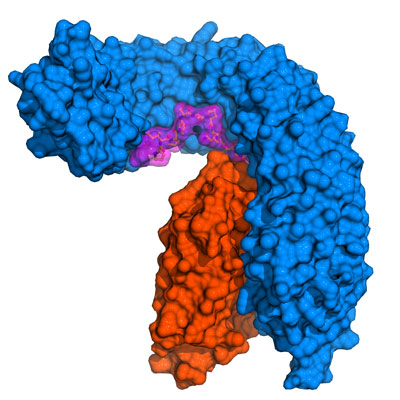We now demonstrate that an active, post-translationally modified IDA peptide is directly sensed by the extracellular ligand-binding domain of HAESA. IDA binding allows HAESA to recruit the co-receptor kinase SERK1 to form an active signaling complex. Interaction of the HAESA and SERK1 kinase domains in the cytoplasm triggers a signaling cascade that leads to abscission of organs.
For the full story see the press release from the University of Geneva
Figure: Molecular view of the membrane receptor signaling complex controlling plant organ shedding. The cell surface receptor HAESA is shown in blue, bound to the plant peptide hormone IDA (magenta) and the helper protein SERK1 (in orange).
Reference
Mechanistic insight into a peptide hormone signaling complex mediating floral organ abscission. Julia Santiago, Benjamin Brandt, Mari Wildhagen, Ulrich Hohmann, Ludwig A Hothorn, Melinka A Butenko, Michael Hothorn. eLife 2016;10.7554/eLife.15075 DOI: http://dx.doi.org/10.7554/eLife.15075



































